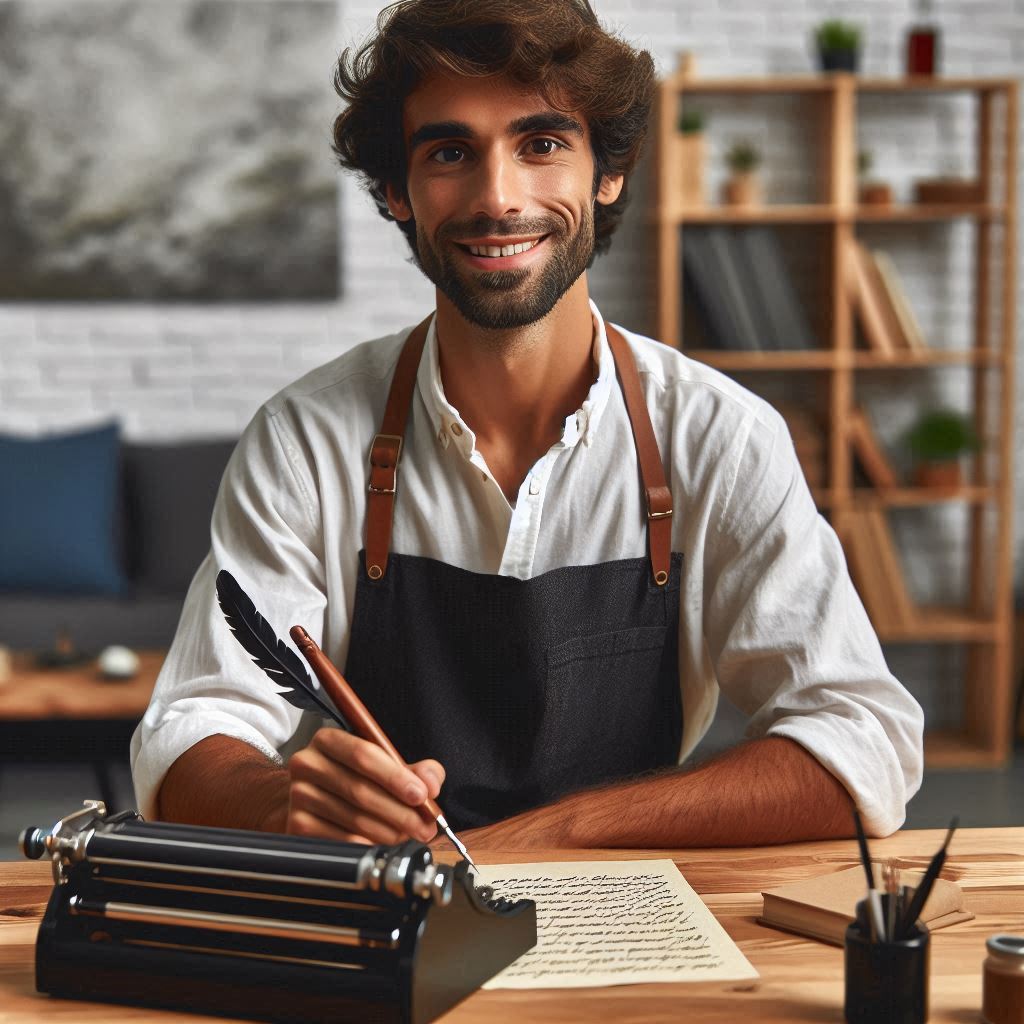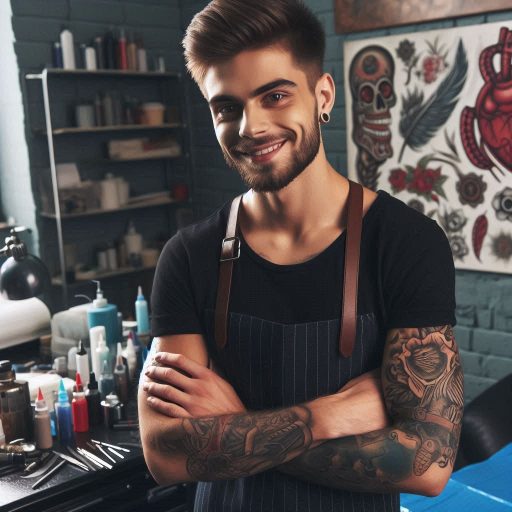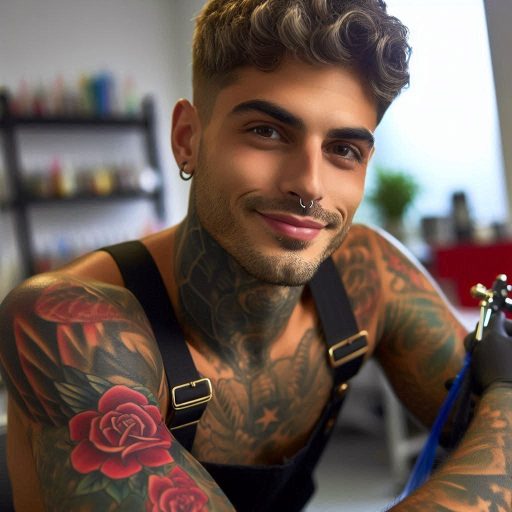Introduction
Collaborating with other artists and designers involves working together to create unique and innovative projects.
This partnership brings together diverse perspectives, skills, and experiences to produce something greater than the sum of its parts.
The concept of collaborating with other artists and designers
Collaboration in the creative industry refers to the process of joining forces to combine individual talents and expertise to produce exceptional work.
It involves communication, teamwork, and a shared vision to achieve a common goal.
Importance of collaboration in the creative industry
Collaboration is crucial in the creative industry as it fosters creativity, innovation, and exploration of new ideas.
Working with other artists and designers can help broaden perspectives, push boundaries, and challenge traditional thinking, leading to breakthroughs in the creative process.
Preview of what will be covered in the blog post
In this blog post, we will discuss the benefits of collaborating with other artists and designers, explore different types of collaborations, provide tips for successful collaboration, and showcase inspiring examples of successful creative partnerships.
Stay tuned to learn more about the power of collaboration in the creative industry!
Benefits of collaborating with other artists and designers
Collaborating with other artists and designers can be incredibly rewarding and beneficial for your own creative growth.
Here are some of the key advantages:
Sharing knowledge and expertise
Working with others allows you to tap into their unique skills and experiences, which can help you broaden your own knowledge base.
Whether it’s learning a new technique or gaining insight into a different artistic perspective, collaborating with others can expand your horizons in ways you never thought possible.
Inspiring new ideas and creative approaches
One of the most exciting aspects of collaborating with other artists and designers is the opportunity to inspire and be inspired.
By working with individuals who have different creative visions and approaches, you can spark new ideas and push the boundaries of your own work.
This cross-pollination of ideas can lead to innovative and unique solutions that you may not have discovered on your own.
Expanding network and opportunities
Collaborating with other artists and designers allows you to connect with a wider network of professionals in your field.
This can open up new opportunities for collaborations, exhibitions, and projects that you may not have had access to otherwise.
Building strong relationships with other creatives can also lead to referrals and recommendations, helping you grow your career in exciting ways.
Enhancing skills and learning from others
Working with talented individuals can be a great way to enhance your own skills and grow as an artist or designer.
By observing how others approach their work and collaborating on projects together, you can pick up new techniques, strategies, and insights that can elevate your own practice.
Transform Your Career Today
Unlock a personalized career strategy that drives real results. Get tailored advice and a roadmap designed just for you.
Start NowThis continuous learning process can help you stay motivated and inspired to push your creative boundaries.
In essence, collaborating with other artists and designers is a valuable and enriching experience that can have a profound impact on your creative practice.
By sharing knowledge, inspiring new ideas, expanding your network, and learning from others, you can grow as an artist and designer in ways you never thought possible.
So, don’t hesitate to reach out and collaborate with your peers ‘ you never know what amazing things you may create together!
Read: How to Get Started with Hand Lettering
How to find potential collaborators‘
Collaborating with other artists and designers can be a great way to expand your creative horizons and produce innovative work.
However, finding the right collaborators can sometimes be a challenge.
Here are some tips on how to find potential collaborators:
Attend networking events and workshops
Networking events and workshops are excellent places to meet other artists and designers who may be interested in collaborating.
These events provide a platform for like-minded individuals to connect and share ideas.
Utilize online platforms and social media
Online platforms such as Behance, Dribbble, and Instagram are great resources for finding potential collaborators.
You can browse through portfolios, reach out to artists whose work you admire, and discuss possible collaborations.
Join creative communities and organizations
Joining creative communities or organizations related to your field can expose you to a network of talented individuals who may be interested in collaborating.
These communities often host events and projects where collaboration opportunities arise.
Reach out to artists and designers whose work you admire
If there are specific artists or designers whose work you admire, don’t hesitate to reach out to them.
Send them a message expressing your interest in collaborating and discuss potential project ideas.
Many artists are open to collaborations that align with their creative vision.
By following these strategies, you can increase your chances of finding the right collaborators for your next project.
Remember that collaboration is a two-way street, so be open to new ideas and be willing to compromise to create something truly unique.
Read: Balancing Creativity and Business in Art Careers
Transform Your Career Today
Unlock a personalized career strategy that drives real results. Get tailored advice and a roadmap designed just for you.
Start Now
Establishing Effective Communication and Collaboration
Collaborating with other artists and designers can lead to amazing results, but only when communication is clear and effective.
Setting Clear Goals and Expectations
Start by defining the purpose of the collaboration and what you hope to achieve.
Clearly outline the goals and expectations for the project.
- Define the desired outcome
- Agree on the scope of work
- Establish deadlines and milestones
Establishing Roles and Responsibilities
Assigning specific roles and responsibilities to each team member helps streamline the collaboration process.
- Identify strengths and expertise
- Delegate tasks accordingly
- Clarify decision-making processes
Creating a Timeline and Project Plan
Developing a timeline and project plan ensures that everyone is on the same page and working towards a common goal.
- Break down the project into smaller tasks
- Allocate resources effectively
- Review and adjust the plan as needed
Maintaining Open and Honest Communication
Throughout the collaboration, encourage open and honest communication to address any issues or concerns that may arise.
- Provide regular updates on progress
- Offer constructive feedback
- Listen actively to team members
Read: Digital Art Tools for Modern Tattoo Designers
Learn More: Creating a Portfolio for Automotive Design
Overcoming challenges in collaboration
Differences in creative vision and style
Collaborating with other artists and designers can be a rewarding experience, but it also comes with its own set of challenges.
One of the most common challenges in collaboration is the differences in creative vision and style.
Each artist or designer may have a unique approach to their work, which can clash with the vision of others involved in the project.
Communication breakdowns
Communication breakdowns can also hinder the collaboration process.
Misunderstandings or lack of clarity in communication can lead to confusion and delays in the project.
It is essential to maintain open and clear communication channels to ensure that everyone is on the same page.
Conflicts over decision-making
Conflicts over decision-making are another challenge that artists and designers may face when collaborating.
Differing opinions on how to proceed with the project can lead to disagreements and tensions within the team.
It is crucial to have a method in place for resolving conflicts and making decisions collectively.
Dealing with ego and competition
Dealing with ego and competition is another obstacle that can arise in collaborations.
Artists and designers may have strong personalities and a desire to assert their ideas, which can lead to power struggles and a lack of cooperation.
It is essential to set aside ego and focus on the common goal of the project.
Transform Your Career Today
Unlock a personalized career strategy that drives real results. Get tailored advice and a roadmap designed just for you.
Start NowRead: The Evolution of Calligraphy Through History
Successful Collaboration Stories
In the creative industry, collaboration is key to creating innovative and impactful work.
Many successful collaborations have made a lasting impact on the industry, inspiring others to work together towards a common goal.
One of the most famous collaboration stories is between Nike and designer Virgil Abloh.
The partnership resulted in a highly successful sneaker collection that sold out within minutes of its release.
The collaboration showcased the power of combining different perspectives and talents to create something truly unique and desirable.
Case Studies of Famous Collaborations in the Creative Industry
There are countless examples of famous collaborations in the creative industry that have left a mark on the world.
These collaborations have brought together artists, designers, and creatives from different backgrounds to create groundbreaking work.
One iconic collaboration is between artists Andy Warhol and Jean-Michel Basquiat.
Their combined works pushed the boundaries of traditional art and paved the way for a new wave of artistic expression.
Another notable collaboration is between fashion house Louis Vuitton and artist Yayoi Kusama.
Lessons Learned from Successful Collaborations
Successful collaborations have taught us valuable lessons on how to work effectively with others towards a common goal.
These lessons can be applied to any collaborative project, whether in the arts, design, or any other industry.
Communication is key in any collaboration, ensuring that all parties are on the same page and working towards the same objectives.
Respecting each other’s strengths and expertise can lead to a more harmonious and productive working relationship.
Being open to new ideas and different perspectives can spark creativity and innovation in a collaborative project.
How to Replicate the Success in Your Own Collaborations
If you’re looking to replicate the success of famous collaborations in your own projects, there are a few key strategies you can employ.
By following these tips, you can enhance the effectiveness of your collaborations and achieve successful outcomes.
Identify the strengths and weaknesses of each collaborator to optimize their contributions to the project.
Set clear goals and objectives for the collaboration to ensure that everyone is working towards a common purpose.
Transform Your Career Today
Unlock a personalized career strategy that drives real results. Get tailored advice and a roadmap designed just for you.
Start NowEstablish open lines of communication and provide regular feedback to keep the collaboration on track and address any issues that may arise.
Conclusion
Collaborating with other artists and designers offers numerous benefits, including fresh perspectives and innovative ideas.
Teamwork and cooperation are essential in the creative process, fostering a sense of community and shared vision.
By seeking out new collaborations, artists can expand their networks, gain new skills, and grow professionally.
Overall, the importance of working with others cannot be understated in the world of art and design.
Embrace collaboration, build partnerships, and watch your creativity and professional growth flourish.




